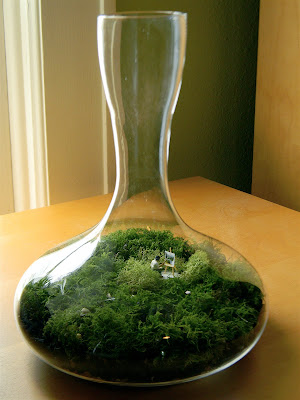My sister-in-law and I visited her best friend Jim near his 1-year anniversary of Hagg Lake property ownership. If you've never been to Henry Hagg Lake, and I never had, it's 25 miles Southwest of Portland, sitting at the base of Oregon's coastal range in Gaston, Oregon. Well, we were not on the lake but well above it, overlooking the 11 miles of shoreline while we explored some of the newly forested property near the high point, just past the giant boundary tree, a sentimental Douglas Fir oozing fresh sap in time with the changing beauty.
 |
| photo by Jim |
Too close to sunset, we thought, we headed down into the hidden valley flanking the treeline to the West. And there we stalked the bramble, arching our fingers to avoid conspicuous thorns, stepping delicately on the slippery mash of rotting bramble, leaves, and creek mud. Trying not to fall because there is nothing to hold onto. And if you do fall, the thorny bramble holds you in an unfriendly way. Amid the drizzle, we worked our fingers sore filling empty collanders with our spoils. I only fell once. Falling was an education on how far I could safely reach, which meant leaving many a taunting arch full of gold star standards to hang heavy, waiting for the birds of tomorrow.
 |
| photo by Jim |
As the dusk fell down upon us, we made our way back to a warmly lit home where Jim made us fresh blackberry pie. It was so good! He has graciously allowed me to share the recipe here. It makes some of the prettiest napkin stains.
 |
| photo by Jeni |
From the Williams-Sonoma book: "Essentials of Baking". Master Recipe: Flaky Pie Pastry (with additional comments and alterations by Jim)
For double crust pie
2/3 cup cold unsalted butter (salted is ok too) (1 stick plus 1/6 cup)
6 Tbs cold vegetable shortening. (I use Earth Balance)
2 2/3 cups flour (I make one of the cups whole wheat flour but you don't have to)
2 Tbs sugar (optional, but hey....of course I add that)
1/2 tsp salt (but if you use salted butter you can skip this)
8 Tbs ice water (you might have to add more but add carefully)
Cut the butter and shortening into 3/4 inch pieces.
Using a Stand Mixer:
In a large bowl of a stand mixer fitted with the paddle attachment, combine the flour, sugar, and salt.
Mix on low speed until blended, about 10 seconds.
Turn off mixer and add the butter and shortening and then continue mixing on slow speed just until
the mixture forms large peas, about 20 seconds.
Add the ice water 1 Tbs at a time, and mix on low speed just until the mixture begins to hold together, about 20 seconds. (add a bit more ice water if needed)
The dough will form large clumps and pull away from the sides of the bowl, but will not form a ball. To test, stop the mixer and squeeze a small piece of dough; it should hold together.
Transfer the dough to a work surface. (lightly floured)
For the double crust pie, divide the dough in half and form each half into a 6-inch disk. Wrap each disk tightly in plastic wrap and refrigerate until well chilled, about an hour or for up to overnight.
Now get about 6 to 8 cups of blackberries together. Some recipes call for insane amounts of sugar to be added to the blackberries. I think a cup is more than enough. Don't be afraid to adjust that to taste whenever you make this pie until you get it just right. A cup is fine. A bit more if you're feeling generous. Add 1/4 cup of tapioca to thicken the berries and keep the juice under control. If you don't have tapioca you can add 1/2 cup flour. Add some cinnamon. I just shake a bunch on there but cinnamon adds a nice flavor to the pie.
Note: I forget the tapioca from time to time. It's not the end of the world but it makes for a super juicy pie. I mean, when you cut the pie there will be a lot of juice. If you do that, just carefully ladle out some of the excess and you'll be fine.
When you're ready to pull out the dough disks and roll out the pie, pre heat the oven to 350 degrees.
Roll out that crust, top and bottom. Assemble using a standard pyrex 24 cm (9.5 inch) glass pie dish. (lightly butter and flour inside) Drop those berries in. Put that top on and poke it with a fork a bunch of times to allow for venting. Now slip that in the oven and bake at 350 degrees for 45 minutes to an hour until golden brown and bubbly.
Yeah, that's all there is to it. When done, carefully pull it out of the oven and let it cool for a bit on a rack.
Serve warm with vanilla ice cream if you're feeling especially dangerous.
 |
| photo by Jim |
 |
| photo by Jim |




